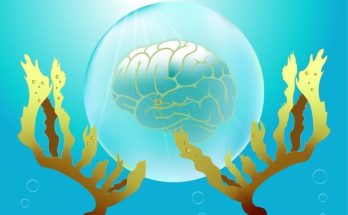What’s Causing This Cyst?
A cyst is a small pocket of tissue often filled with fluid or pus. It can occur due to an injury, infection, or other issues. They’re usually benign but may need treatment for complications.
A cyst is a sac-like pocket of membranous tissue that contains fluid, air, or other substances. Cysts can grow almost anywhere in your body or under your skin.

There are many types of cysts. Most cysts are benign or noncancerous.
Whether a cyst needs treatment depends on a number of factors, including:
- the type of cyst
- the location of the cyst
- whether the cyst is causing pain or discomfort
- whether the cyst is inflamed or infected
If you’re not sure if you have a skin condition, you can take a picture and send it to an online dermatologist.
Cysts can vary in appearance depending on their type and location. Here are 11 types of cysts.
Epidermoid cyst

Epidermoid cysts are small, benign bumps filled with keratin. Kertain is a protein that’s essential in forming your skin, hair, and nails. Epidermoid cysts occur when something blocks hair follicles, and skin cells build up beneath this blockage.
These cysts can look like a skin-colored, tan, or yellowish bump filled with thick material. They typically occurTrusted Source on your face, neck, or torso, but can occur across your body.
In rare cases, epidermoid cysts can be caused by an inherited condition called Gardner syndrome.
Sebaceous cyst

Sebaceous cysts are filled with sebum and are less common than epidermoid cysts. They often form within sebaceous glands, which are part of your skin and hair follicles. Sebaceous glands make oil for your skin and hair.
These cysts most commonly occur on your face, neck, or torso, and are often the result of damage to sebaceous glands.
Breast cyst

Benign cysts can develop when fluid collects near your breast glands. They can cause pain or tenderness in the affected area.
While breast cysts are noncancerous, there are many possible other more serious causes for a lump in your breast. It’s important to be familiar with how your breasts typically feel so you’re aware of changes. This way, you’re more likely to notice changes right away.
You should try to make an appointment to see a healthcare professional if:
- you discover a new lump
- an area of your breast is noticeably different than the rest
- a lump changes or grows larger
- you notice unexpected discharge from the nipple
- you have an inverted nipple, and it wasn’t always inverted
Ganglion cyst

A ganglion cyst is a round, gel-filled lump of tissue that usually appears along tendons or joints, especially in the hands, wrists, ankles, and feet. Fluid accumulation can occur due to injury, trauma, or overuse, but often the cause is unknownTrusted Source.
A ganglion cyst is common, harmless, and doesn’t cause pain or difficulties unless it grows and puts pressure on other structures.
Pilonidal cyst

A pilonidal cyst is a common skin condition that forms in the cleft at the top of your buttocks. It consists of a small hole or tunnel in the skin that may become infected and fill with fluid or pus and it typically occursTrusted Source after puberty.
Changing hormones, hair growth, and friction from clothes or from spending a long time sitting may all cause a pilonidal cyst.
Symptoms of an infection include:
- pain when sitting or standing
- discolored or sore skin around the area
- pus or blood draining from the abscess, causing a foul odor
- swelling of the cyst
- hair protruding from the lesion
Ovarian cyst

Ovarian cysts often form when the follicle that normally releases an egg doesn’t open. This causes fluid to build up and form a cyst.
Another common type of ovarian cyst occurs after the follicle releases the egg and improperly recloses and collects fluid.
Ovarian cysts occur most oftenTrusted Source in those of menstrual age and are typically first found during pelvic exams.
Ovarian cysts are associated with an increased risk of cancer when they occur after menopause.
Baker (popliteal) cyst

A Baker cyst is a swollen, fluid-filled sac at the back of your knee.
Causes of Baker cysts include conditions or occurrences that affect the joints such as arthritis, inflammation from repetitive stress, or a cartilage injury. Baker cysts can cause inflammation and pain and lower range of motion in your knee.
Physical therapy, fluid draining, and medication can all be used to help treat a Baker cyst.
Pilar cyst

A pilar cyst is a noncancerous, skin-colored, round bump that develops under the surface of your skin. They usually affectTrusted Source the skin on the scalp and results from protein buildup in a hair follicle.
They’re not cancerous, but they can grow to a size that can be uncomfortable.
Mucous cyst

A mucous cyst is a fluid-filled lump that forms on your lip or around your mouth when the salivary glands become plugged with mucus. The most common causes of mucous cysts include:
- lip or cheek biting
- lip piercings
- rupture of the salivary gland
- improper dental hygiene
Mucous cysts will often go away on their own. But if you have recurring or frequent mucous cysts, you may need medical treatment.
Branchial cleft cyst

A branchial cleft cyst is a type of developmental irregularity in which a lump develops on one or both sides of your neck or below your collarbone. It occurs during embryonic developmentTrusted Source when tissues in your neck and collarbone, or branchial cleft, develop differently.
In most cases, a branchial cleft cyst isn’t dangerous. But it may cause skin irritation, skin infection, or — in very rare adult cases — cancer.
Perineural (Tarlov) cyst

A perineural cyst is a fluid-filled sac that forms on the spine.
Causes are unknown, but it may resultTrusted Source from back trauma, including falls, injuries, and heavy exertion.
A perineural cyst can cause pain in your lower back, buttocks, or legs, but this is rare. If you do have symptoms, draining the fluid can help to relieve them.
A pseudocyst shares some of the characteristics of a cyst, but the bump doesn’t have its own lining. Here are three types of pseudocysts.
Folliculitis (ingrown hair cyst)

Folliculitis is an infection of hair follicles. It’s often the result of a fungal or bacterial infection and can often resemble acne.
These pseudocysts are often seen in people who use hair removal methods like shaving or waxing. Ingrown hair cysts are an example of folliculitis. While ingrown hair cysts are possible, if you have bumps that appear near ingrown hairs, there’s a good chance that they’re actually razor bumps instead.
Razor bumps are also known as pseudofolliculitis barbae, which is a type of pseudofolliculitis. Unlike folliculitis, pseudofolliculitis isn’t usually infectious.
Chalazion

A chalazion is a small, usually painless lump on your eyelids that occurs when the duct of the meibomian gland, an oil gland, is blocked.
These pseudocysts can cause tenderness, blurred vision, and painful swelling. If they get too big, they can cause vision difficulties.
Cystic acne

Cystic acne results from a combination of bacteria, oil, and dead skin clogging the pores. It’s the most severe type of acne, but it usually improves with age.
Cystic acne can look like large, pus-filled boils on the skin. It can also be painful to the touch. If these boils rupture, they can cause scarring.
Cystic acne most commonly occurs on your face, chest, neck, back, and arms.
If you believe you may have cystic acne, a dermatologist can prescribe medications to help treat it.
A cyst can appear as a bump on your skin. These can vary in size from small, pimple-sized lumps to much larger, more obvious growths.
Some cysts grow deep inside your body where you can’t feel them. But they may cause or be related to other symptoms.
For example, ovarian cysts, such as those that result from polycystic ovary syndrome, may cause difficulties with ovarian and reproductive function. Polycystic kidney disease, which causes cysts to form in the kidney, can adversely affect kidney function.
Most cysts aren’t painful. They usually don’t cause difficulties unless they’re:
- infected
- very large
- impinging on a nerve or blood vessel
- growing in a sensitive area
- affecting the function of an organ
Cysts and pseudocysts form for different reasons. They can be caused by:
- infections
- inherited diseases
- genetics
- chronic inflammation
- blockages in ducts
The exact cause depends on the type of cyst or pseudocyst.
You should try to schedule an appointment with a healthcare professional if your cyst becomes painful, or increasingly inflamed. This could be a symptom of a rupture or an infection.
They should check your cyst even if it isn’t causing any pain or other difficulties. Differences in these growths can be a symptom of cancer. A healthcare professional may want to remove a tissue sample for testing.
You should never try to squeeze or pop a cyst or pseudocyst yourself, as this can lead to infection.
In some cases, they improve on their own. Putting a warm compress on a cyst can speed up the healing process by helping it drain.
In other cases, medical care is required.
Medical care
Common methods of medical treatment for cysts include a healthcare professional:
- using a needle to drain fluids and other matter from the cyst
- giving you medications, such as a corticosteroid injection, to lower inflammation in the cyst
- performing a surgical removal of the cyst, which may be done if draining doesn’t work or if you have an internal cyst that’s hard to reach and requires treatment
If you’re concerned about your cyst and don’t have an established relationship with a healthcare professional, you can view doctors in your area through the Healthline FindCare tool.
Benign cysts and pseudocysts usually don’t cause long-term difficulties. Sometimes they even go away on their own.
Cysts can refill after being drained. If you have a cyst that continues to refill, you may want to consider having it surgically removed.
If you have cancerous cysts, a healthcare professional will discuss treatment with you. The outlook will vary depending on the type of cancer involved.
Most types of cysts and pseudocysts can’t be prevented, but there are a few exceptions. Those prone to ovarian cysts may be able to prevent new cysts from forming by using hormonal contraceptives.
You can prevent pilonidal cysts from forming by keeping the skin in the affected area clean and dry. Getting up every so often instead of sitting for a long time can also help prevent these cysts.
Cleaning your eyelid near the eyelash line with a gentle cleanser can help keep the oil ducts from becoming blocked. This may help prevent chalazia.
Our experts continually monitor the health and wellness space, and we update our articles when new information becomes available.








The articles you write help me a lot and I like the topic